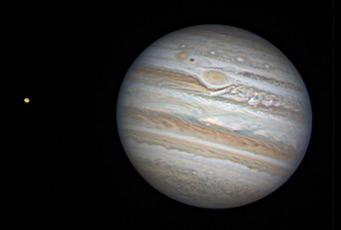Astronomers are building new pro-am collaborations and actively seeking participants in these projects.

S&T: Sean Walker
We tried an experiment in Denver a couple weeks ago. The American Astronomical Society's Division for Planetary Sciences met for its annual “jamboree,” a week packed with presentations by professional planetary scientists in which they talk about their latest work from their particular planetary neck of the woods — a new model of Venus's atmosphere, an estimate of the output of Enceladus's plumes, predictions for Comet ISON . . .
But there is increasing recognition that amateur astronomers have lots to contribute to planetary science, too. So we also held a workshop where professionals could present opportunities for collaborations and amateurs could show samples of their observations. Here are some examples:
- Titan fan Ralph Lorenz (Johns Hopkins University Applied Physics Lab) pointed out that Saturn’s largest moon shows variability on days-long timescales that can be monitored with amateur photometry and spectroscopy (see http://www.lpl.arizona.edu/~rlorenz)
- Pro-am collaborations are charging ahead in Europe, says Ricardo Hueso Alonso (University of the Basque Country). He showed some fabulous images of Jupiter, Saturn, Uranus, and Neptune taken by amateur astronomers that illustrate the dynamics of these giant planets’ atmospheres (see http://www.pvol.ehu.es)
- New Mexico observer Scott Degenhardt presented intriguing dimming of light around Jupiter’s moon Io when occulted by Europa that’s gotten the pros buzzing with possible explanations (see http://scottysmightymini.com/JEE)
- With NASA’s Juno spacecraft flying past Earth on its way to Jupiter just the day before the workshop, mission team members Candy Hansen (Planetary Science Institute) and Glenn Orton (JPL) encouraged people to either take their own observations of Jupiter or to participate in processing images from the JunoCam instrument, which starting fall 2016 will snap images as the spacecraft spins over Jupiter’s poles (see the mission website)
- Asteroids have long been observing targets for both ams and pros. José Luis Galache (IAU Minor Planet Center) showed statistics from the Minor Planet Center demonstrating that discoveries and follow-up observations have grown dramatically over the past 15 years. He highlighted the MPC’s role in coordinating, collecting, and disseminating observations (see http://www.minorplanetcenter.net)
- As Sky & Telescope has been reminding you, peak observing time for Comet ISON is coming up. Padma Yanamandra-Fisher (Space Science Institute) and Nalin Samarasinha (Planetary Science Institute) are coordinating and gathering worldwide observations of this year’s comet (for more information see http://www.psi.edu/ison). There’s also the Comet ISON Observing Campaign (http://www.isoncampaign.org/)
And the results of this experiment? Let’s do it again when DPS meets in Tuscon, Arizona, next year!
Fran Bagenal (University of Colorado at Boulder) is a co-investigator on the Juno and New Horizons missions.
 0
0
Comments
You must be logged in to post a comment.